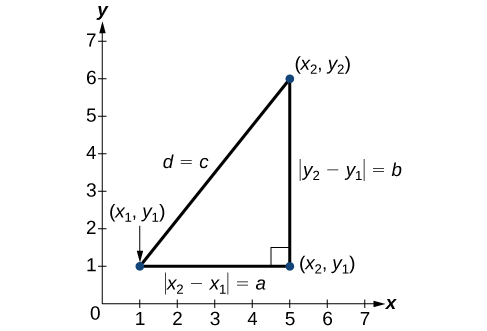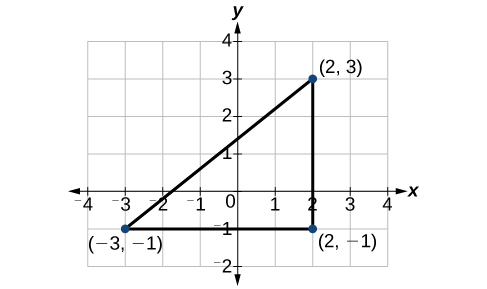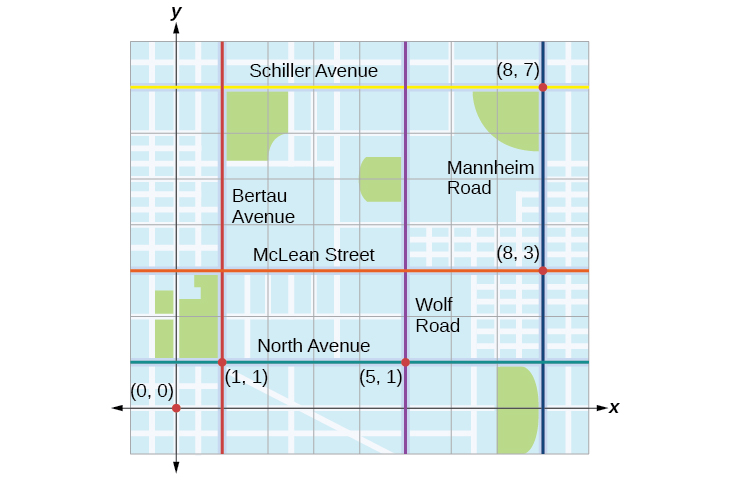| << Chapter < Page | Chapter >> Page > |

The relationship of sides and to side d is the same as that of sides a and b to side c. We use the absolute value symbol to indicate that the length is a positive number because the absolute value of any number is positive. (For example, ) The symbols and indicate that the lengths of the sides of the triangle are positive. To find the length c , take the square root of both sides of the Pythagorean Theorem.
It follows that the distance formula is given as
We do not have to use the absolute value symbols in this definition because any number squared is positive.
Given endpoints and the distance between two points is given by
Find the distance between the points and
Let us first look at the graph of the two points. Connect the points to form a right triangle as in [link] .

Then, calculate the length of d using the distance formula.
Let’s return to the situation introduced at the beginning of this section.
Tracie set out from Elmhurst, IL, to go to Franklin Park. On the way, she made a few stops to do errands. Each stop is indicated by a red dot in [link] . Find the total distance that Tracie traveled. Compare this with the distance between her starting and final positions.
The first thing we should do is identify ordered pairs to describe each position. If we set the starting position at the origin, we can identify each of the other points by counting units east (right) and north (up) on the grid. For example, the first stop is 1 block east and 1 block north, so it is at The next stop is 5 blocks to the east, so it is at After that, she traveled 3 blocks east and 2 blocks north to Lastly, she traveled 4 blocks north to We can label these points on the grid as in [link] .

Next, we can calculate the distance. Note that each grid unit represents 1,000 feet.
Next, we will add the distances listed in [link] .
| From/To | Number of Feet Driven |
|---|---|
| to | 2,000 |
| to | 4,000 |
| to | 5,000 |
| to | 4,000 |
| Total | 15,000 |
The total distance Tracie drove is 15,000 feet, or 2.84 miles. This is not, however, the actual distance between her starting and ending positions. To find this distance, we can use the distance formula between the points and
At 1,000 feet per grid unit, the distance between Elmhurst, IL, to Franklin Park is 10,630.14 feet, or 2.01 miles. The distance formula results in a shorter calculation because it is based on the hypotenuse of a right triangle, a straight diagonal from the origin to the point Perhaps you have heard the saying “as the crow flies,” which means the shortest distance between two points because a crow can fly in a straight line even though a person on the ground has to travel a longer distance on existing roadways.

Notification Switch
Would you like to follow the 'Algebra and trigonometry' conversation and receive update notifications?